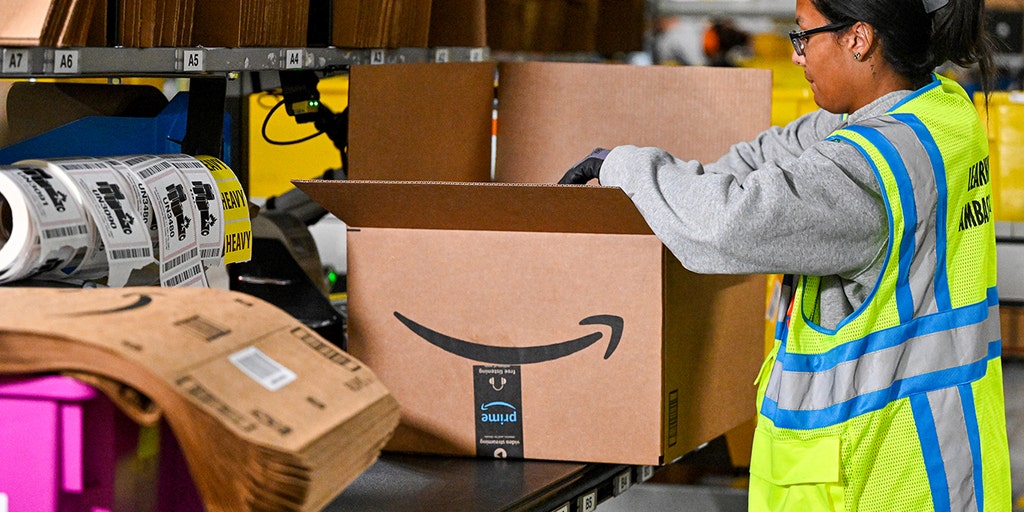Amazon says it will rely on AI in logistics and advanced automation to avoid hiring about 600,000 workers by 2033 while targeting a doubling of sales in the same period. That combination of aggressive productivity goals and large scale labor substitution puts a public spotlight on one of the world s largest employers. Could this be a template for how major retailers balance growth and labor costs in the coming decade?
Background: Why Amazon is Betting on AI and Robotics
Amazon operates massive fulfillment and logistics networks built on repetitive operational tasks. To build throughput, reduce errors, and keep costs under control, the company is expanding warehouse robotics, deploying AI driven sorting and fulfillment systems, and investing in logistics software that uses predictive analytics to optimize inventory and routing. In plain terms:
- Warehouse robotics means machines that pick, move, or pack goods, reducing the need for manual handling and enabling scalable automation in fulfillment centers.
- AI driven sorting uses algorithms to route parcels faster and more accurately than legacy rule based systems.
- Logistics software with predictive analytics coordinates inventory, delivery windows, and routing to reduce idle time and late shipments.
For business leaders, the practical problem being addressed is straightforward: how to scale sales without a proportional increase in labor costs or operational friction. This is how Amazon automates fulfillment with AI and robotics at scale.
Key Findings and Details
- 600,000 workers Amazon plans to avoid hiring roughly 600,000 workers by 2033 through automation and AI.
- Double sales target The company aims to double sales within the same time frame.
- Automation elements Expanded deployment of warehouse robotics, AI driven sorting and fulfillment, and logistics planning software to squeeze more capacity out of existing facilities and fleets.
- Safety and productivity framing Amazon positions automation as a path to a safer, more productive workplace for remaining employees by shifting repetitive tasks to machines.
Implications and Analysis: So What?
The announcement matters for multiple stakeholders and raises both opportunities and risks.
For business outcomes and competition
- Scaling without proportionate hiring can materially lower marginal costs and accelerate growth. If Amazon doubles sales without doubling labor, competitors may face pressure to pursue similar investments in robotics and ecommerce automation to remain competitive.
- Smaller retailers with lower capital budgets may struggle to match Amazon s pace, potentially widening gaps in cost structure and delivery economics.
For workers and labor markets
- Avoiding 600,000 hires at a company of this size is a significant labor market event. It will prompt questions about labor displacement, reskilling, and the quality of new roles created around AI oversight and maintenance.
- The company s framing of improved safety and productivity for remaining staff is credible, but the transition will require training, workforce planning, and clear communication to avoid morale and reputational risks.
For regulators and public perception
- High visibility announcements like this attract regulatory scrutiny around labor practices, antitrust concerns, and the ethical use of AI. Policymakers are focused on transparency, workplace safety, and how automation affects communities.
- Public relations risks are real. Large scale job avoidance, even when framed as automation, can provoke negative media coverage and political pushback.
Technical and operational risks
- Reliance on sophisticated AI and robotics increases exposure to software bugs, supply chain constraints for hardware, and integration complexity.
- Expected gains are not automatic. Effective deployment requires high quality data, long testing cycles, and ongoing human oversight.
This strategy aligns with broader trends in automation where large retailers accelerate investments in robotics, collaborative robots, and predictive analytics to reduce labor dependency while improving throughput. Companies that manage change carefully by pairing technology with reskilling and clear governance are most likely to capture the upside while limiting avoidable fallout.
Conclusion
Amazon s plan to avoid 600,000 hires and double sales by 2033 crystallizes a pivotal question for business leaders and policymakers. Automation at scale can unlock efficiency and growth, but it also reshapes labor markets, regulatory landscapes, and competitive dynamics. Businesses should evaluate trade offs now: invest in automation where it preserves or expands value, and plan for workforce transitions where it displaces roles. Watch for implementation detail, workforce programs, and regulatory responses that will determine whether this strategy becomes a model or a cautionary tale.




